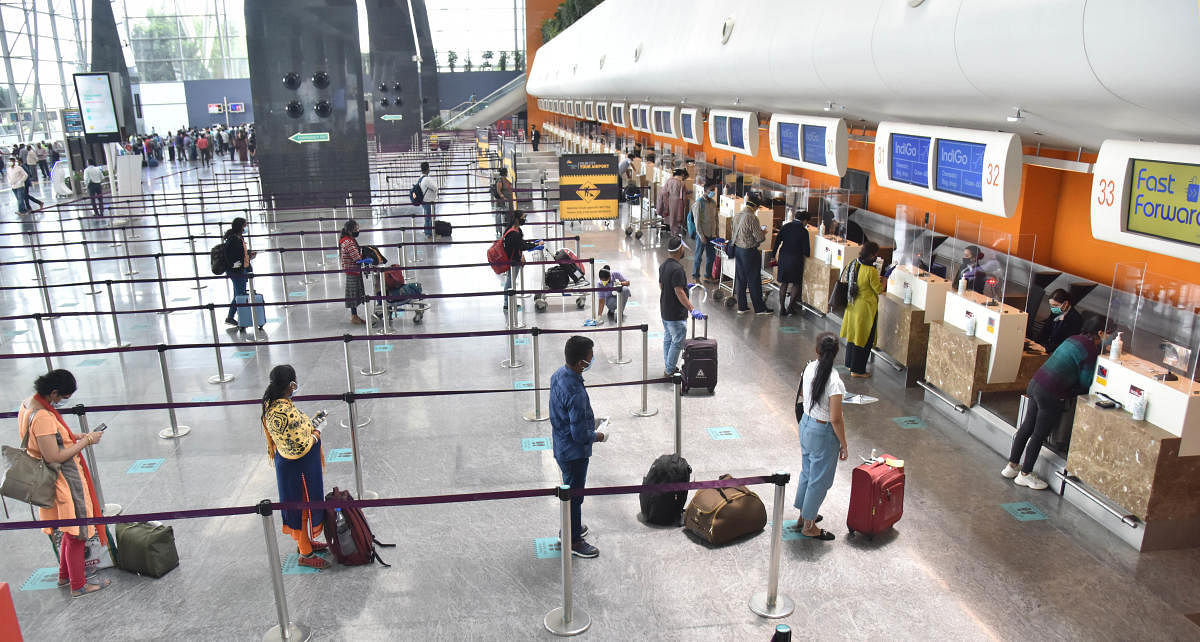
COVID-19 has altered many things in the world, and architecture is no exception.
The norms of social distancing and an increased emphasis on cleanliness have led to a reimagining of public spaces.
Netra Ajjampur, co-founder and director of Sorted Pandit Studio, sees humans taking one of two options.
“Humankind adapts, and we could find a way to create new public spaces and come together,” she says, citing the novel ways restaurants have reopened.
Her second view is more pessimistic: people are so comfortable living behind a screen that face-to-face interactions may be reserved for a much smaller circle than before.
“In the second scenario, city spaces might become extremely privatised. For example, large stadium concerts might be replaced by smaller backyards,” she explains.
Public spaces
According to Susan Punnen, freelance architect, an obvious workaround is to look at larger spaces that help people follow social distancing norms.
“But if you look closely at the existing spaces, that may not be possible in today’s infrastructure,” she says.
The aim should be to create spaces that are well ventilated and easily sanitised.
Air quality focus
Nejeeb Khan, founder-director of KGD Architecture, says changes are taking place in civic buildings and public spaces.
He agrees the focus of design has shifted to air quality as the virus is airborne.
“We’re dubbing it ‘age of the air’. Air conditioners only cool the air. We will see structural changes that allow for fresh air to cleanse a space often,” he predicts. This already exists in healthcare buildings, now the design principle will be used in office spaces and malls as well.
Sunlight is another factor. While there is no scientific data that it kills the coronavirus, a host of bacteria and viruses are heat sensitive.
“Because of this, clients are asking for more natural light than before,” he says. He adds that an increase in open spaces and natural light has also led to an increased interest in landscaping within buildings.
In spaces like restaurants that involve more close contact, many have resorted to plastic screens. “You have visual connectivity but there’s a barrier in between. It’s at best a temporary solution,” Netra says.
Performance spaces
Public spaces are necessary for concerts and protests, both of which are essential in society.
Netra’s studio had been working on a travelling music venue which could also host an art exhibition on wheels.
“It was to be for a small crowd but once the pandemic set in, we had to redesign the project. The challenge is to preserve the experience without having contact,” she says. Her studio is also at the helm of a research initiative called Project Platypus, its first venture is to explore what performance spaces may look like when combined with current safety norms.
Airports
Nejeeb’s firm has designed multiple airports, including some parts of the Kempegowda International Airport. He says till around 15 years ago airports were functional buildings, after which they became a supplement to the experience of travel. “That’s when retail areas, lounges and landscaping were introduced. Now with the need for contact-free travel, a different kind of experience takes precedence,” he says.
While permanent design changes have not been implemented yet, Nejeeb anticipates a tough challenge. “The building has to be easy to navigate for both frequent and first-time travellers,” he says. He adds that unlike many other public spaces the concern of security is much larger in airports.
A few temporary solutions already in place: blocking of seats, increased barricading, closing down of retail spaces---essentially turning airports back into functional spaces.
Homes
A majority of the population is going to continue working from home in the foreseeable future. “Which means we’ll be looking at designing functioning home office spaces which bring forth the same productivity levels as an office,” she says.
Netra says most architectural styles have arisen from the crisis, a lack of material, or a change in thinking.
“Events like wars and pandemics have always influenced art and culture and Covid-19 seems like one such instance,” she explains.
People will not be as comfortable in public as before. “For example, I don’t know how many of us will ever be comfortable drinking water from communal water coolers with the one plastic or glass cup,” she says.
Back to the future
Madan Sunderraj, the heritage consultant at the Indian Institute of Science, says technologies to combat pandemics are already in place. He cites the nanopetal surface architecture developed by IIT Kharagpur. The material is superhydrophobic and antibacterial and has been used exclusively in cleanroom environments like blood banks up till now. More commonly known technology like augmented reality, virtual reality, 3-D printing, drones, and more will be put to use in novel ways to equip buildings and spaces, architects predict.
Madan adds hydrophobic and antibacterial materials have existed as far back as the Mohenjo-daro civilisation. “We are not post or pre-COVID-19 because we’re constantly revamping as a society anyway,” he concludes.